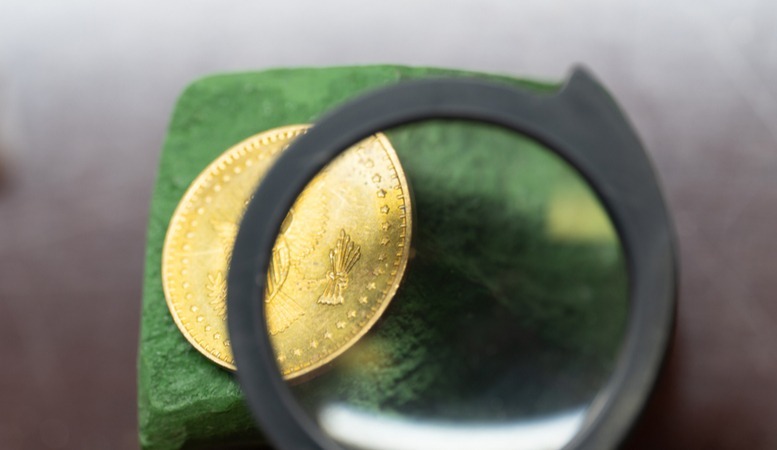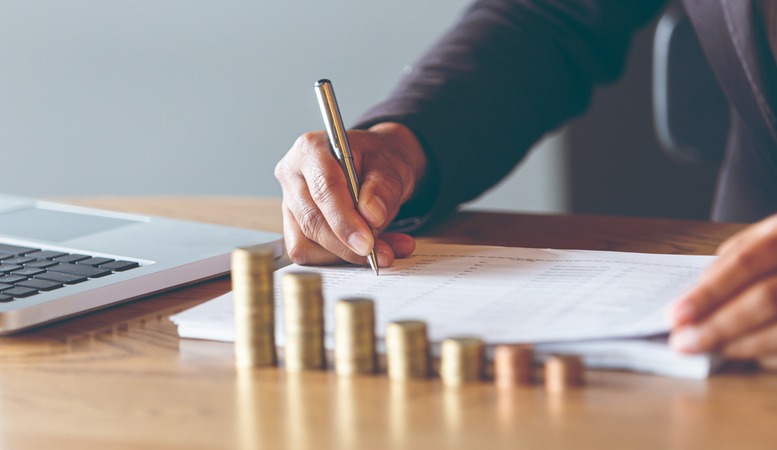Table of Contents
Oxford Gold Group fields countless questions regarding the difference between a proof coin vs. uncirculated types, and it is not always an intuitive comparison. These two kinds of coins appear very similar on a surface level, but experienced coin collectors will notice significant differences. Here is what precious metals investors need to know about these coins before adding them to a collection or silver IRA investment portfolio.
The Minting Process for Proof Coins vs. Uncirculated Coins
Proof coins are the earliest prints of a run of coins, whereas uncirculated coins are normal coins that are never placed into general circulation. Both are worth more than their face values and appear in coin collections worldwide.
The first significant difference between proof coins and uncirculated ones is how the minting process creates each version.
Double-Strike Proof Coins
As early prints, a mint will strike proof coins twice using a single die for a clear indentation and flawless finish. The dual-striking action gives proof coins a mirror-like background and glamorous shine. In addition, proof coins often receive hand-polishing during the minting process and individual packages to preserve this signature finish.
Traditionally, proof coins were struck twice at the beginning of a minting run to ensure the die created a perfect design before producing any other coins. Mints now only produce proof coins for collectors, which has increased the value of these items even more.
Single-Strike Uncirculated Coins
In contrast, the mint strikes uncirculated coins only once, like circulated coins. However, the mint does use specially burnished blanks to make these coins so that they appear shinier than regular coins in circulation. An uncirculated coin also often receives a special encasement to preserve this value.
Do Handling and Packaging Differ Between a Proof Coin vs. Uncirculated Versions?
Yes. Mint workers handle proofs and uncirculated coins very differently. These establishments also follow different procedures when preparing these coins for shipping.
Proof Coins Require Tremendous Care
Mints hand-polish each of the proof coins to perfection, inspecting each coin for a pristine appearance and flawless condition. True proof coins should not have knicks or scratches upon purchase. Mints often ship these items in commemorative packaging, with a Certificate of Authenticity to keep or display.
Uncirculated Coins Do Not Carry The Same Attention to Detail
Uncirculated coins do not receive any special polishing and may have blemishes from contact with other coins during the minting process. However, the mint does protect these coins during the packaging process. They also have a Certificate of Authenticity.
The Finish for Proof Coins vs. Uncirculated Coins
The finish refers to the visual appearance of a coin, and proof coins do have discernible differences in quality and effect.
Frosted Proof Coins
Proof coins usually exhibit a frosted foreground with a mirror-like background. The combination allows coin collectors to see the detailed design on the coin clearly, and there should be no visible blemishes.
Normal Uncirculated Coins
Uncirculated coins generally have a matte-like finish, which means these coins might appear shinier than circulated coins. However, the luster of uncirculated coins does not compare to that of proof coins in mint condition.
Understanding the Mintage of a Proof Coin vs. Uncirculated Collector’s Items

The term mintage describes how many coins the mint creates in a single run. The mintage of proof coins and uncirculated coins varies significantly.
Proof Coins are Rare
Generally, mints produce a small number of proof coins and may base this number on collector interest or the rarity they want to maintain. These coins no longer represent “true” proofs, and a mint often makes more than one coin for each run.
Uncirculated Coins are Still Valuable
The mint decides how many uncirculated coins to make in a run, and there may be fewer uncirculated coins than proof ones. The rarity of these coins impacts their value to collectors, including as part of a gold and silver IRA plan.
Comparing Prices and Face Value for Proof Coins and Uncirculated Coins
Both types of coins lack a set face value because the government does not intend these items for use as legal tender. Instead, they have a symbolic value associated with precious metals and collectability. Interested investors should take steps to keep any collectible or investment coins in mint condition and away from other coins to prevent misplacing or damaging them.
Investors in the market for these coins will find significant differences in the prices between proof coins vs. uncirculated items.
Pay More For Proof Coins
For example, investors can expect to pay more for proof coins than other options because of the degree of rarity. Proof coins are also beautiful, which drives up the price point.
Uncirculated Coins Are Easier To Find
Uncirculated coins are common, which makes them a more affordable addition. The minting process also helps keep the costs down compared to proof coins.
Why Choose Between Proof Coins vs. Uncirculated Ones?
Mints design both proof and uncirculated coins for collectors, which means that these coins are meant to stay in their protective casing forever. Collectors aim to keep these items in mint condition to preserve their value, so stores generally do not accept either proof coins or uncirculated coins as valid currency toward services or products.
Since these coins stand apart from quarters, pennies, dimes, and nickels, mints often use gold or silver. The precious metal element of the design also drives up the demand and value of these coins.
How Do Proof and Uncirculated Coins Compare to Bullion Investments?
The proof coin vs. uncirculated coin debate covers many factors, and there are opportunities to invest in other options, like bullion coins. The mint strikes a bullion coin once, like uncirculated coins, and they do not receive special polishing or a protective coating. However, these coins still represent a solid short-term investment as far as precious metals go.
Bullion coins are commodities, which are easy to buy and sell and still distinct from pennies, nickels, or dimes. The precious metals in these coins usually include gold or silver, like the Gold American Eagle or the Gold Canadian Maple Leaf.
Choosing the Right Coin Investment to Purchase
Investing in items like proof coins or other gold and silver items provides a great option to store wealth over the long term. Precious metals hold value exceptionally well, even in turbulent market conditions. It is important to realize that there are many options out there for an investor who knows how to invest in a gold IRA, including bullion, proof coins, and uncirculated coins.
A solid investment will not look identical for each person, and the following questions should help clarify the right choice:
- Is collectability the primary aim?
- Will the coins need to store wealth?
- Will the coins increase in value over time?
For example, collectors often select proof coins, which are rarer and have a lovely finish. They may also choose uncirculated coins if they want something easier to find and slightly more cost-effective to purchase. Proof coins also increase in value over time; the rarer they are, the better.
Proof coins usually have a cost well above spot value for bulk gold or silver due to their rarity or collectability, but this comes with responsibility. If the plan is to invest without the long-term commitment to safeguard and store delicate items, bullion coins are a less complicated option. These coins are common and hold consistent value (spot value) well.
Factors to Look at When Purchasing a Coin
For investors that have decided to make strides in the proof coin vs. uncirculated coin realm, a final purchase needs to also take into consideration the variations among coins of the same run. Before committing to a purchase, assess the coins for the following warning signs:
Signs of Wear
All coins require proper handling to stay in pristine condition, and even sealed proof coins begin to show signs of damage or spots. Pristine coins hold their value better, so scrutinize each coin carefully before buying it.
Flaws or Damage
While looking for evidence of wear, check for signs of damage or subtle flaws. Imperfections generally lower the value of gold and silver coins, but mistakes in the minting process could make coins more valuable, especially proof coins. Mistakes are rare, but finding a coin with an overdate or off-center strike may increase the investment value considerably.
Shine
Some coins are brighter than others, and the visual appeal of the coin matters for collection purposes. Investors will want to put money in something they enjoy viewing, and these qualities might differ slightly from collector to collector.
Learn More About Proof and Uncirculated Coins

Has the possibility of precious metal collecting sparked some curiosity in proof coins, uncirculated coins, bullion coins, or investing in silver IRAs? Oxford Gold Group is happy to discuss all the possibilities with you as you make the right choice for your portfolio. Our experts can provide in-depth information about coins, investments, precious metals regulations, and more.
Call Oxford Gold Group at (833) 600-GOLD today to learn more about the proof coin vs. uncirculated coin decision or start the process of adding gold or silver investments to your legacy.








